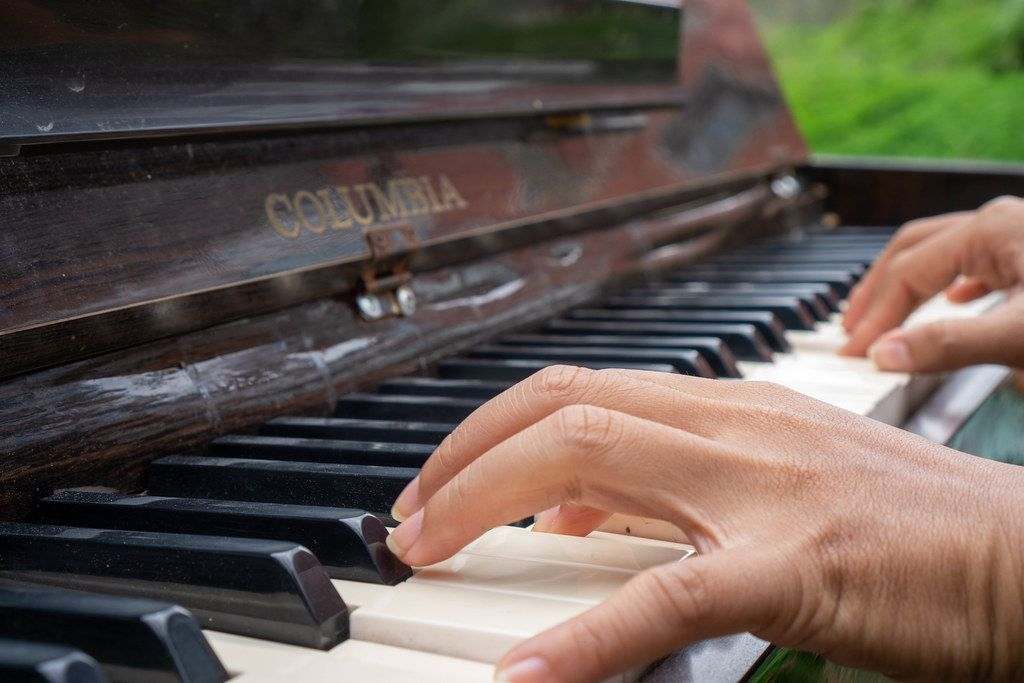Beginner piano finger placement is one of the most important things you can learn as a beginning piano player. The way that your fingers sit on the keys will determine how easy it is to play, and if you do it properly, it can also improve your tone. Not sure where to start? Read this guide for some tips on learning finger placement from an easy-to-follow beginner tutorial that anyone can use!
What is finger placement?
Finger placement is the angle and spacing between your fingers as you play the notes on the piano. The angled position that you choose will affect the quality of sound you produce when playing. For example, when you hold your fingers close together, the sound you make will be duller. When you spread them out, the tone will be brighter. You can also use different finger placements to create different moods within your music. There are many finger placements in piano playing. The three most common types are Hand Position, Half-Covered Placement, and Full-Covered Placement.
How to practice finger placement
Practice makes perfect, and when it comes to finger placement, the trick is to practice using the same finger positions you want to use when you perform. If you want your left hand to play a particular passage in an easy, flowing, and relaxed manner, then use your left hand to play the passage in the same way.
Don’t add any new notes or ideas; just repeat the same passage over and over again with the same finger placement. This will get your left hand used to the way it feels without your brain being confused by the fact that you’re not playing what you want it to! Once you’ve practiced a basic passage a few times, move on to practicing the same passage with different finger placements.
Image source: Flickr
The 3 types of finger placement
Hand Position: With hand position, you hold all four fingers of your right hand in a natural position, with the thumb underneath the fingers. Half-Covered Placement: This is when you place three fingers of your right hand above the thumb, and the fourth finger on the lowest note on the piano. Full-Covered Placement: With this finger placement, your right hand is fully covered, with all fingers touching the keys.
Keep your fingers close together for an easy transition
When you want to go from one key to another, use the fingers of your right hand to stop the movement. For example, if you’re playing a fast passage, and you want to transition to a slower section, use the first, middle, and last fingers of your right hand to “stop” the movement of the left hand as you go from one key to the other. This will create a smooth transition from one note to the next, without your fingers hitting any unintended keys along the way.
When you want to return to the original key, use the same fingers to “start” the movement once again. Then finish off the passage and creating a smooth transition back to the beginning key.
Keep your fingers spread apart for a harder transition
To create a harder transition than the one described above, you’ll want your right hand to go from one key to the next in a more open and spread-out manner. To make this transition, use the thumb of your right hand to stop the movement of the left hand on a specific key. Once you’ve done this, use the tips of your fingers to spread apart as you transition from one key to the next in an open manner. This will create a harder transition, but with less chance of hitting other keys in the process.
Don’t stop once you’ve made the transition – keep going!
Once you’ve made the transition from one key to the next, don’t stop! Instead, use the same fingers to start moving again, this time at a wider angle, to create the next note. This will help you maintain the same finger spacing, which will make it easier for you to keep your fingers positioned correctly.
Tips for beginners to help you learn finger placement
Don’t try to play fast on your fingerboard right away. Start by practicing scales, chords, and basic passages slowly, with just one finger at a time. As you practice, work on keeping your hand position correct. Don’t change the hand position while you’re playing. Make sure that it’s comfortable and natural for you. That way, you won’t be distracted by the feeling of holding your hand in a different way. As you practice, don’t be discouraged if you mess up. Everyone makes mistakes, and that’s normal. Just keep practicing, and don’t give up. You’ll get used to the feeling of holding your hand in a different way, and your finger placement will get better over time.
5 Steps to Good Finger Placement
1 – Hold your hand in a relaxed position.
2 – Bend your fingers one at a time, starting with your pinky.
3 – When you’ve bent your pinky, use your thumb to stop the movement of your fingers.
4 – Transition from one key to the next using finger spread.
5 – Return to the original key using hand position.
Practice Makes Perfect
Practicing doesn’t just help you when you’re learning finger placement. It’s how you practice that will help you improve. If you rush or hurry during your practice sessions, you’re more likely to make mistakes. And you’re also less likely to play correctly because you’re not relaxed and focused. So take your time, and practice slowly and carefully. Don’t rush; don’t play “fast”; don’t play “loud”. Just play slowly and carefully, and don’t make any mistakes. Slow practice will help you get better at doing two things: It will help you learn faster, and it will give you time to think and analyze what you’re playing so you don’t make mistakes.
Keep your fingers close together
As you practice, don’t keep your fingers too close together. If they are too close together, it’s harder to control the movement of your fingers, which will make your practice session longer and more difficult. Instead, keep your fingers spaced apart about an inch or two. Once you’ve practiced for a little while, you can start to move your fingers closer
2-Octave Scales
2-Octave scales are perfect for beginners who want to practice finger placement. These scales are made up of only two notes, so they don’t require you to move your fingers between keys very far. The scales also don’t use the full fingerboard, so you can practice with your fingers close together, which makes it easier to control the movement of your fingers.
5-Octave Scales
5-Octave scales use five keys instead of two and require a bit more finger movement, which means they’re better suited for intermediate players and above.
Other blogs about piano lessons!

